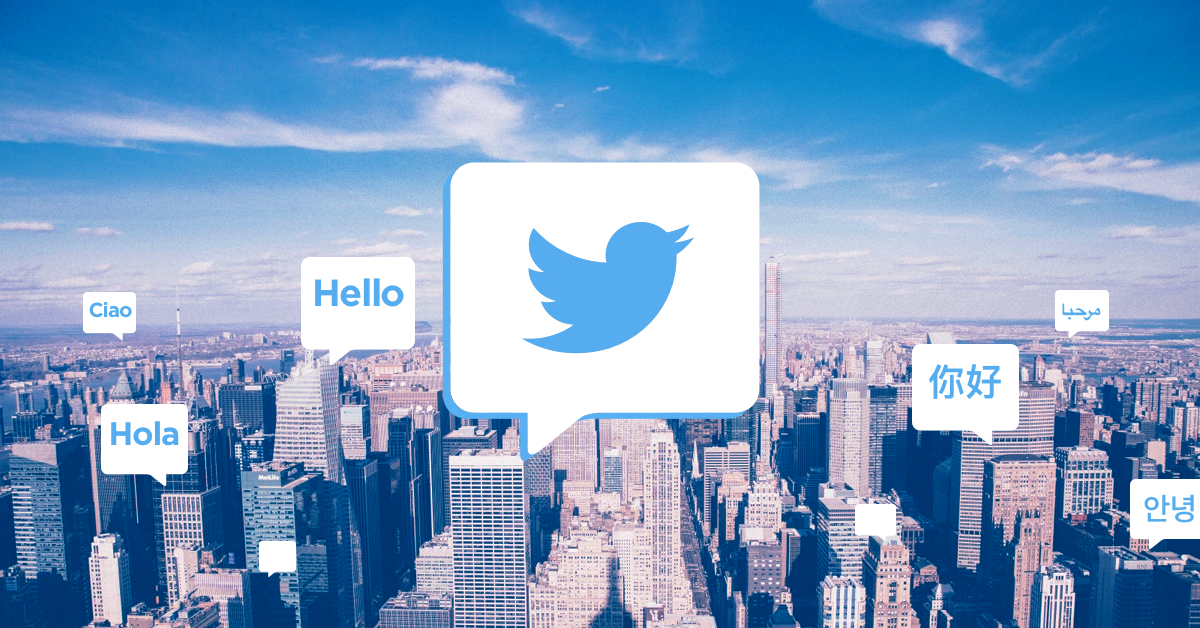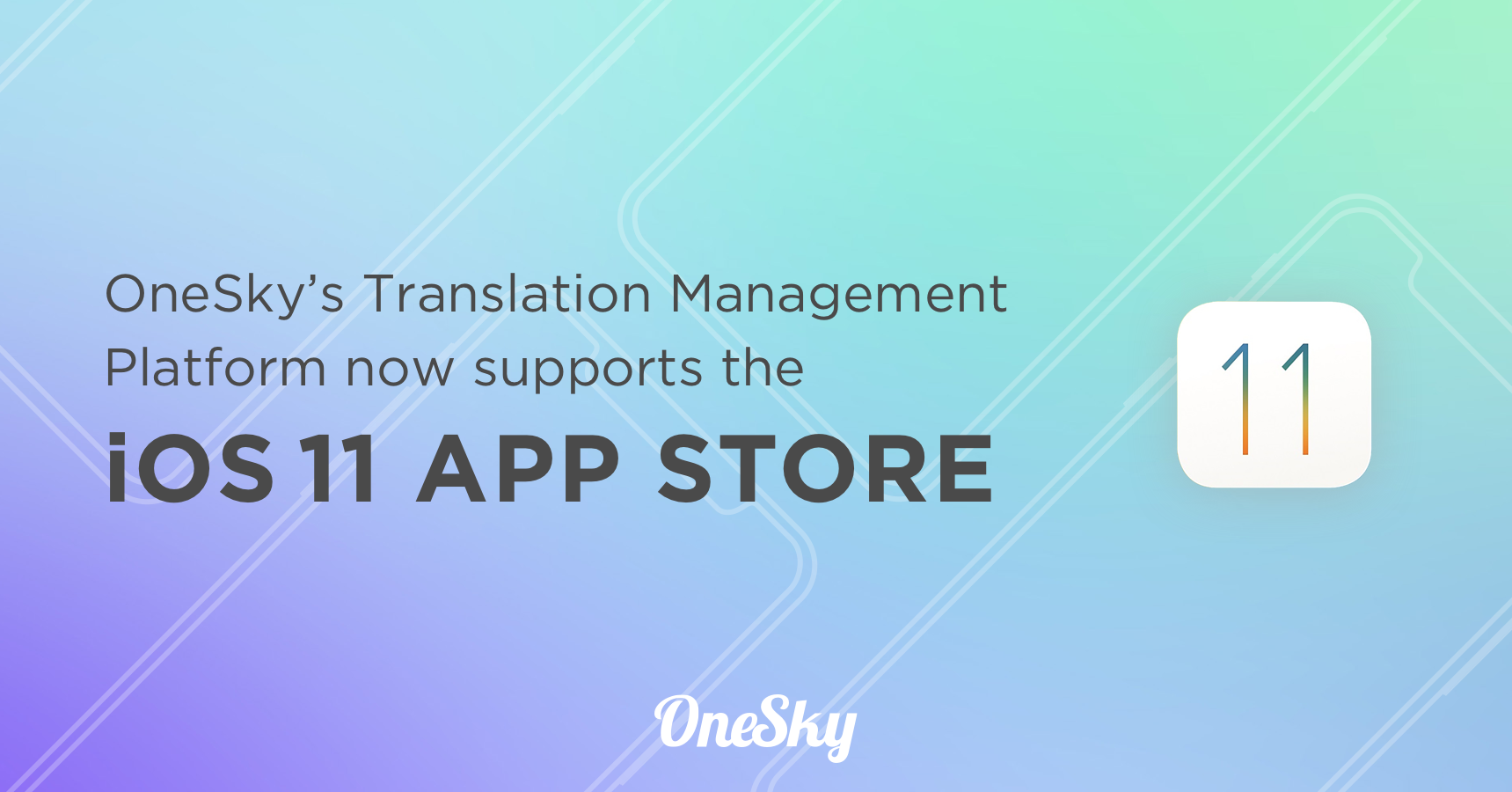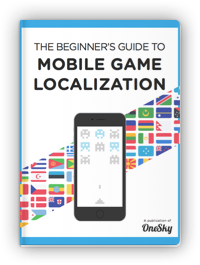Twitter’s Alline de Paula Shares 5 Pro Tips for Marketing Localization
It takes a village to raise a child. But if your child is a product ready to go global, uniting your “village,” or team, is a major challenge—particularly when it comes to your marketing localization.
The main pain point when it comes to localizing your marketing assets is deciding who gets the final say: is it your Marketing Team, the gatekeepers of your unified international messaging? Or is it your Localization Team, who knows the ins and outs of individual markets?
It’s not always an issue, but when different priorities are at play (and at odds) it becomes difficult to know whose vision to follow for final result — the Localization Manager, or the Chief of Marketing?
Now, throw your external localization vendors into the mix, who have their own unique perspectives and expertise on the markets you’re localizing to. Your marketing localization workflow can start to get out of hand.
Twitter, as one of the world’s most successfully localized companies, recognized the need for a solution.
Take their SMB Marketing Content team, for example. They were getting pulled away from actual time creating content with tedious logistical back-and-forth with Localization Teams. On the other end, external vendors and internal Localization Teams were burdened with marketing assets not technically ready for internationalization. They knew that if they didn’t address these minor frictions soon, they would start to veer off-track and lose momentum in shipping their marketing worldwide.
To solve this issue, Twitter created an entirely new position in the company. Enter Alline de Paula, the Twitter SMB Team’s Localization Marketing Manager.

As part-marketing strategist, part-localization project manager, she sits between the Marketing and Localization teams to mediate between the two. Her role serves to keep both sides happy, balancing the company’s high-level marketing and localization priorities.
In other words, she’s the tie-breaker.
We had the chance to catch up with Alline to find out more about:
- Her unconventional career path that led her to her current role
- Challenges in marketing localization
- Best practices managing both Marketing and Localization teams
- How her work optimizes Twitter’s marketing localization process
Can you share a bit about your background and how you ended up in this role?
I started my journey in localization as a freelancer translator for video-games. From there, I moved to coordinating a team of video-game translators for Brazilian Portuguese, which I speak.
From coordinating the team of video-game translators for a translation vendor, I progressed to coordinating languages I didn’t know, and to enter the marketing localization world for the first time.
There, I carved out a new role for myself. I mediated the communication between translators and marketing reviewers on the client’s side. This meant that I heard from the stakeholders themselves — what they needed in terms of level of service, innovation, deadlines, etc. And it was my job to bring those needs and wants to life within my team.
This pushed me to be involved with many teams and projects at once. It set me up perfectly for my current role at Twitter.
What are your main responsibilities as a Localization Marketing Manager?
My role is unique, and there’s not a dull moment! I focus on production and strategy.
“Production” encompasses the translation requests that my team sends me and I coordinate with Twitter’s Localization Team.
“Strategy” includes being in touch with our Marketing Managers to make sure our content is global and localizable, SEO for our localized pages, launching new languages, and any bespoke local content that needs to be produced by native speakers.
It’s a perfect mixture of Localization and Marketing Management. It is a perfect match and it has been a very happy, very busy year for me!
Let’s talk a bit about Twitter’s localization workflow.What does your system look like end-to-end?
For our team, which is SMB Marketing Content, the Marketing Managers produce the content — with a lot of my input — then the requests cascade down to me for localization.
From there, I make sure we have everything the translators need and then ship it to Twitter’s Localization Team. They manage the deadlines with vendors.
I also ensure that the vendor get as much insight from our team as possible with frequent calls with our Copywriter, who shares insights, best practices, etc.
What’s most helpful about your role within this system?
My dynamic with both sides ensures that our stakeholders and Marketing Managers don’t have to worry about localization timing, leaving them to concentrate on other initiatives. This also ensures that what gets to the vendor is well-briefed and fully localizable—making for high-quality content that will meet our team’s goals.
Can you share any “best practices” you’ve learned for the localization process?
[bctt tweet=”Marketing localization has it’s own pace and dynamic. @allinedepaula” username=”OneSkyApp”]
You cannot think of it the same as any other localization work you do.
I learned from experience that the relationship between the stakeholder, the client’s internal reviewers, and the translators is the key to success. The more feedback the localization vendor receives (the more insight they get from the client’s team on the company’s goals, voice, and style) the higher the quality of the output.
How much interaction do you have with stakeholders during the localization process?
[bctt tweet=”I find it extremely important that the stakeholder gets educated on the ins and outs of localization”]
If they are not localization-savvy, it can cause a lot of misunderstandings, frustration, or delays. Taking the time to educate the client on the localization process, why it works a certain way, and how they can benefit from it is important to a healthy, smooth localization workflow.
What are some of your main challenges in localization? How do you work around them?
One word: “innovation”
The world is getting smaller and we need to ship content globally at lightening speed. The only way to achieve that is to rely on localization vendors to not only have the right technology in place, but to be innovative on the way they use it to solve the client’s problems. I’ve seen many cases of teams not going through the localization path with their content because “it takes too much time” or “it’s too complicated”.
It’s down to the localization vendors out there to come up with creative ideas to solve each particular issue, and make it work for their client.
Wrap Up
Even if you don’t have the capacity to hire someone for this role, we think that Alline’s best practices can help improve localization workflows of any scale involving marketing.
Here are the 5 key takeaways and lessons from Alline:
- Conceptualize managing your Marketing and Localization teams at two levels: Strategy and Production.
- Appoint someone designated to oversee your Marketing Localization to save marketers from worrying about localization timelines, and localization teams will receive higher-quality content from the Manager’s input.
- Facilitate good communication between the three parties (the stakeholder, internal reviewers, and the translators.) This is essential to the whole process.
- Take time to educate yourself on how the localization process works and why it can benefit your product. Understanding the purpose behind it and how you’ll get to your targets go a long way in setting up how you carry out localization.
- Choose a localization vendor that is innovative and able to come up with creative ways to solve issues that come up, and who will best serve your needs.

Alline (@allinedepaula) is the Localization Marketing Manager at Twitter, where she makes the company’s goal of “reaching every person on the planet” possible by managing the localization of global marketing materials into 10 different languages. Brazilian by birth and Irish by heart, Alline’s career started with International Trade, settled into Localization and eventually, Marketing. At Twitter, she has revamped global localization processes, on-boarded new countries and languages, and taught Americans to cool it on all those exclamation points. Alline is the wife of one lucky man and proud mother of three lucky tortoises.
 Twitter, Inc. (NYSE: TWTR) is what’s happening in the world right now. From breaking news and entertainment to sports and politics, from big events to everyday interests. If it’s happening anywhere, it’s happening first on Twitter. Twitter is where the full story unfolds with all the live commentary and where live events come to life unlike anywhere else. Twitter is available in more than 40 languages around the world. The service can be accessed at Twitter.com, on a variety of mobile devices and via SMS. For more information, visit about.twitter.com or follow @twitter.
Twitter, Inc. (NYSE: TWTR) is what’s happening in the world right now. From breaking news and entertainment to sports and politics, from big events to everyday interests. If it’s happening anywhere, it’s happening first on Twitter. Twitter is where the full story unfolds with all the live commentary and where live events come to life unlike anywhere else. Twitter is available in more than 40 languages around the world. The service can be accessed at Twitter.com, on a variety of mobile devices and via SMS. For more information, visit about.twitter.com or follow @twitter.
Interested in going global?
Localizing your marketing is just the beginning.
Learn how to handle your entire localization process efficiently with our step-by-step Beginner’s Guide to App Localization:




 Written by -
Written by - 




 Written by
Written by 



This is a very interesting web page and I have enjoyed reading many of the articles and posts contained on the website, keep up the good work and hope to read some more interesting content in the future. Absolutely this article is incredible. And it is so beautiful.